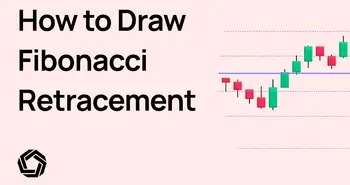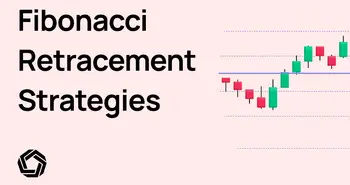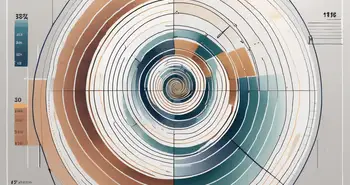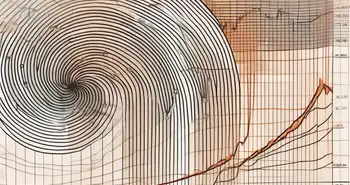Where to Place Fibonacci Retracement
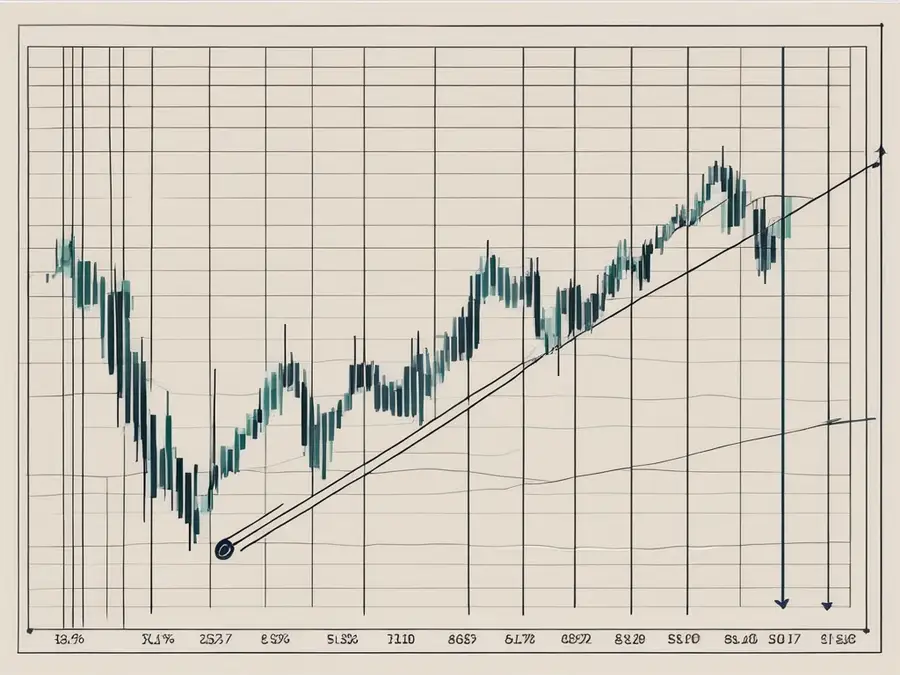
Fibonacci retracement is an essential tool for traders, helping them identify potential areas of support and resistance in the market. However, knowing where to place these retracement levels can be quite challenging. In this comprehensive guide, I will provide you with a step-by-step approach to correctly placing Fibonacci retracement levels, so you can make informed trading decisions.
Understanding Fibonacci Retracement
Before diving into the details of how to place Fibonacci retracement levels, let's first understand the basics of this powerful tool. Fibonacci retracement is based on the principle of using mathematical ratios derived from the Fibonacci sequence, which is a series of numbers where each number is the sum of the two preceding ones. These ratios, including the 23.6%, 38.2%, 50%, 61.8%, and 78.6%, are crucial in identifying potential support and resistance levels in the market.
The Basics of Fibonacci Retracement
To get started with Fibonacci retracement, you need to identify the major swing highs and lows on a price chart. A swing high is a peak in price that is higher than the prices preceding and following it, while a swing low is a trough that is lower than the prices preceding and following it. By connecting these swing highs and lows, you can draw the retracement levels.
Once you have identified the swing highs and lows, you can begin drawing the Fibonacci retracement levels. The most common way to do this is by using the Fibonacci retracement tool provided by most trading platforms. This tool allows you to click and drag from the swing high to the swing low, automatically drawing the retracement levels on the chart.
It's important to note that Fibonacci retracement levels are not always exact. They are more like zones or areas where price is likely to react. Traders often look for confluence between Fibonacci retracement levels and other technical analysis tools, such as trendlines, moving averages, or candlestick patterns, to increase the probability of a successful trade.
The Importance of Fibonacci Retracement in Trading
Fibonacci retracement levels provide traders with valuable information about potential price reversals or continuations. These levels act as support and resistance zones, indicating where price is likely to bounce or break through. By accurately placing Fibonacci retracement levels, you can anticipate price movements and make sound trading decisions.
One of the key benefits of Fibonacci retracement is its ability to help traders identify potential entry and exit points. When price retraces to a Fibonacci level, it often presents a buying or selling opportunity, depending on the direction of the overall trend. Traders can use these levels to set profit targets or place stop-loss orders to manage risk.
In addition to its usefulness in identifying support and resistance levels, Fibonacci retracement can also be used in conjunction with other technical analysis tools to confirm or validate trading signals. For example, if a Fibonacci retracement level coincides with a trendline or a key moving average, it adds more weight to the potential reversal or continuation signal.
Furthermore, Fibonacci retracement levels can be applied to different timeframes, from intraday charts to weekly or monthly charts. This flexibility allows traders to analyze price action and identify potential trading opportunities across various timeframes.
It's worth mentioning that Fibonacci retracement is not a foolproof tool and should not be used in isolation. Like any other technical analysis tool, it has its limitations and should be used in conjunction with other indicators, risk management strategies, and a comprehensive trading plan.
The Principles Behind Fibonacci Retracement Placement
Placing Fibonacci retracement levels correctly is essential for their effectiveness. Let's explore the key principles you need to consider:
The Golden Ratio and Its Role in Fibonacci Retracement
The golden ratio, approximately 1.618, is a mathematical constant that plays a significant role in Fibonacci retracement. The retracement levels are calculated by multiplying the distance between the swing high and low by specific Fibonacci ratios. The most crucial ratio is the 61.8%, often referred to as the golden ratio. This level is considered the most significant in determining potential areas of support and resistance.
Identifying Key Levels for Placement
When placing Fibonacci retracement levels, it's important to identify key levels on the price chart. Look for areas where the price has previously shown hesitation, reversals, or significant breakouts. These key levels, such as previous highs and lows, trendlines, or moving averages, can serve as additional confirmation for the retracement levels' effectiveness.
Step-by-Step Guide to Placing Fibonacci Retracement
To place Fibonacci retracement levels accurately, follow these steps:
Selecting the Right Chart
Begin by selecting the appropriate chart timeframe that aligns with your trading strategy. Whether you're a scalper, day trader, or long-term investor, make sure to choose the timeframe that best suits your trading style.
Determining the Swing Highs and Lows
Identify the significant swing highs and lows on the chart. These points should be easily recognizable and represent price extremes. Connect the swing highs and lows using a trendline tool.
Drawing the Fibonacci Levels
Once you have connected the swing highs and lows, you can proceed to draw the Fibonacci retracement levels. Start from the swing high and drag the cursor to the swing low, then release the mouse button. The retracement levels will automatically appear on your chart, helping you identify potential areas of interest.
Common Mistakes in Fibonacci Retracement Placement
While Fibonacci retracement is a highly effective tool, it's essential to be aware of common mistakes that traders often make when placing these levels:
Avoiding Incorrect Level Placement
One common mistake is placing the retracement levels incorrectly. This can happen when traders fail to accurately identify the swing highs and lows or when they draw arbitrary retracement levels without considering the golden ratio and other key levels on the price chart. To avoid this mistake, take your time to identify the correct levels and always use the golden ratio as a guide.
Overcoming Misinterpretation of Retracement Levels
Another mistake traders make is misinterpreting the significance of retracement levels. While these levels can provide valuable insights, they should not be relied upon blindly. Always consider other technical analysis tools and indicators for confirmation before making trading decisions.
Strategies for Maximizing Fibonacci Retracement
Now that you understand how to correctly place Fibonacci retracement levels, let's explore some strategies to maximize their effectiveness:
Combining Fibonacci Retracement with Other Indicators
One strategy is to combine Fibonacci retracement with other technical analysis indicators such as moving averages, trendlines, or oscillators. By using multiple tools in conjunction, you can increase the probability of accurately identifying potential support and resistance levels.
Timing Trades with Fibonacci Retracement
Another strategy is to align Fibonacci retracement levels with key market events or economic releases. For example, if you see a Fibonacci retracement level aligning with a major support level and an upcoming news release, it may present an excellent opportunity to enter a trade with higher conviction.
Personal Expert Advice: It's crucial to practice and gain experience in using Fibonacci retracement. Start by identifying historical charts and manually drawing the retracement levels to observe their influence on price movements. Over time, you will develop a keen eye for spotting potential areas of support and resistance that can enhance your trading performance.
Frequently Asked Questions (FAQ)
What is Fibonacci retracement?
Fibonacci retracement is a technical analysis tool that uses mathematical ratios derived from the Fibonacci sequence to identify potential areas of support and resistance in the market.
How do I place Fibonacci retracement levels correctly?
To place Fibonacci retracement levels accurately, identify the swing highs and lows on a price chart and draw the retracement levels using the golden ratio and other key levels as a guide.
Why are Fibonacci retracement levels important in trading?
Fibonacci retracement levels provide valuable insights into potential price reversals or continuations. By accurately placing these levels, traders can anticipate market movements and make informed trading decisions.
What are some common mistakes when using Fibonacci retracement?
Common mistakes in Fibonacci retracement placement include incorrect level placement and misinterpretation of the significance of retracement levels. It's crucial to accurately identify the swing highs and lows and use other technical indicators for confirmation.
How can I maximize the effectiveness of Fibonacci retracement?
One strategy to maximize the effectiveness of Fibonacci retracement is to combine it with other technical analysis tools such as moving averages or trendlines. Additionally, aligning the retracement levels with key market events or economic releases can provide higher conviction trades.
By following this comprehensive guide on where to place Fibonacci retracement, you will gain a solid understanding of this powerful tool and its application in your trading. Remember, practice and experience are key to mastering Fibonacci retracement, so take your time and keep refining your skills. Happy trading!
Ready to take your trading to the next level with the insights from Fibonacci retracement? Morpher is the perfect platform to apply your knowledge and strategies. With zero fees, infinite liquidity, and the ability to trade a vast array of assets, Morpher empowers you to trade on your terms. Whether you're interested in fractional investing, short selling without interest fees, or leveraging up to 10x, Morpher's revolutionary blockchain-based platform offers a unique trading experience. Sign up now at Morpher and receive your free sign-up bonus to start trading in a whole new way. Embrace the future of investing with Morpher.

Disclaimer: All investments involve risk, and the past performance of a security, industry, sector, market, financial product, trading strategy, or individual’s trading does not guarantee future results or returns. Investors are fully responsible for any investment decisions they make. Such decisions should be based solely on an evaluation of their financial circumstances, investment objectives, risk tolerance, and liquidity needs. This post does not constitute investment advice.

Painless trading for everyone
Hundreds of markets all in one place - Apple, Bitcoin, Gold, Watches, NFTs, Sneakers and so much more.

Painless trading for everyone
Hundreds of markets all in one place - Apple, Bitcoin, Gold, Watches, NFTs, Sneakers and so much more.

